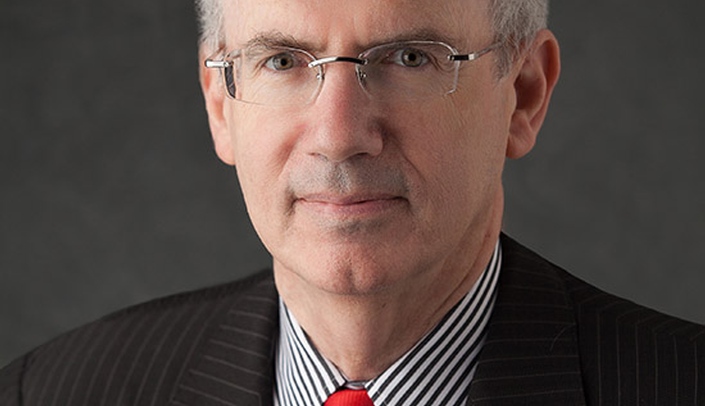As government officials, business leaders and others consider their options for safely taking steps to recover from the COVID-19 pandemic in the state of Nebraska and beyond, the University of Nebraska Medical Center has developed an innovative data-driven model that will help to guide their decision-making.
The Pandemic Recovery Acceleration Model (PRAM) is designed to assist public and private sector leadership in assessing the regional and statewide impact of the COVID-19 pandemic and making informed decisions about social distancing and other key pandemic response measures. The model provides daily assessments of the regional specific impact of COVID-19 and availability of medical resources across Nebraska, helping officials make real-time decisions about appropriate resources and recovery steps for their communities.
The model, which was developed by physicians, researchers and public health experts at UNMC in direct response to the COVID-19 pandemic, has been shared with Nebraska state, county and city officials. UNMC plans to share the model and make it available to other universities, academic health centers and public entities.
“We’re all eager to return to a more familiar routine of living and working, but building our ‘new normal’ will require a thoughtful, localized, data-driven approach that puts the health and safety of individuals first,” said Jeffrey P. Gold, M.D., chancellor at UNMC. “I believe this new model will help our state leaders develop just such a plan. It also could very well serve as a model for other states. The PRAM will serve as a daily temperature check across the state, helping us to decide, in real time, what public health measures we should keep or remove, and whether and how certain businesses or educational institutions could stage their recovery steps.”
This graphic way to illustrate current COVID-19 community impact was developed collaboratively by Dr. Gold and Chris Wichman, Ph.D., of the UNMC Department of Biostatistics and Ali S. Khan, M.D., M.P.H., dean of the UNMC College of Public Health. They worked closely with leaders of the UNMC Global Center for Health Security (GCHS), including Ken Bayles, Ph.D., Chris Kratochvil, M.D., James Lawler, M.D., M.P.H., John Martin Lowe, Ph.D. and Shelly Schwedhelm, M.S.N., R.N.
This model allows health officials, public officials and university leaders to capture a real time snapshot of how COVID-19 is affecting the community, a region or the state by using six parameters describing the pandemic impact. The PRAM then graphically illustrates the current pandemic status and in an innovative way, also provides analysis of the rate of acceleration or deceleration of change for the key parameters over a fourteen-day interval, provided at given point in time.
“The PRAM is not a predictive model”, Dr. Gold said. “It’s a statement of where we are and the acceleration of change at any time,” he said. “It allows for accurate and timely data sharing and critically important health care decision making based on evolving best practices.”
Because available health resources also are being tracked, health officials can see if resources such as the number of critical care beds or ventilators are being used faster or more slowly than the spread of the disease. In this way, resource needs can be anticipated and planned.
“That will be important in helping the University of Nebraska and possibly other sectors of the state reopen university campuses and programs in different areas at different times based on the data analytics,” Dr. Gold said.
How can this model be used as the university and state considers “re-opening”?
The PRAM analysis creates a day-to-day snapshot of disease acceleration/deceleration and resource availability. As the state begins its re-opening strategy, the model will provide daily snapshots that, while not predictive, will be useful in determining if certain strategies are effective and safe.
As more testing becomes available, will the model still be relevant?
Yes. In fact, as testing becomes more prevalent in Nebraska, the model will become more useful in charting the changes in the impact of disease spread and recovery benchmarks.
How else is the university planning for re-opening?
University leaders, including public health experts, are also developing a planning checklist that includes evidence-based protocols on cleaning, protective face wear, hygiene, facility use and more. This checklist will help UNMC and others as they plan to resume university activities, such as in-person teaching/learning.
The model can be viewed at https://www.unmc.edu/healthsecurity/_documents/Pram-Nebraska.pdf.
We are Nebraska Medicine and UNMC. Our mission is to lead the world in transforming lives to create a healthy future for all individuals and communities through premier educational programs, innovative research and extraordinary patient care.
Twitter | Facebook | Instagram | YouTube | Flickr
UNMC-developed model assists in decisions regarding pandemic recovery
- Written by Victoria Cerino
- Published May 6, 2020

Jeffrey P. Gold, M.D., UNMC chancellor
Media Contact
Vicky Cerino
UNMC Strategic Communications
(402) 559-5190
(402) 559-4353
vcerino@unmc.edu